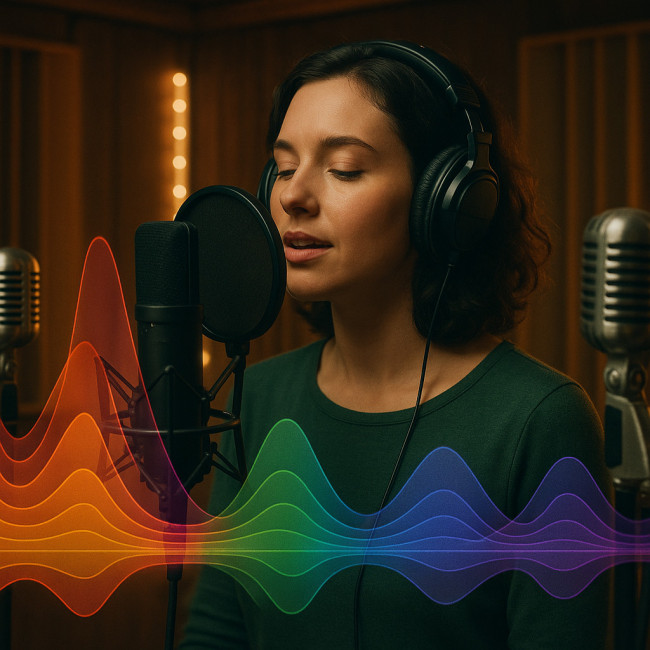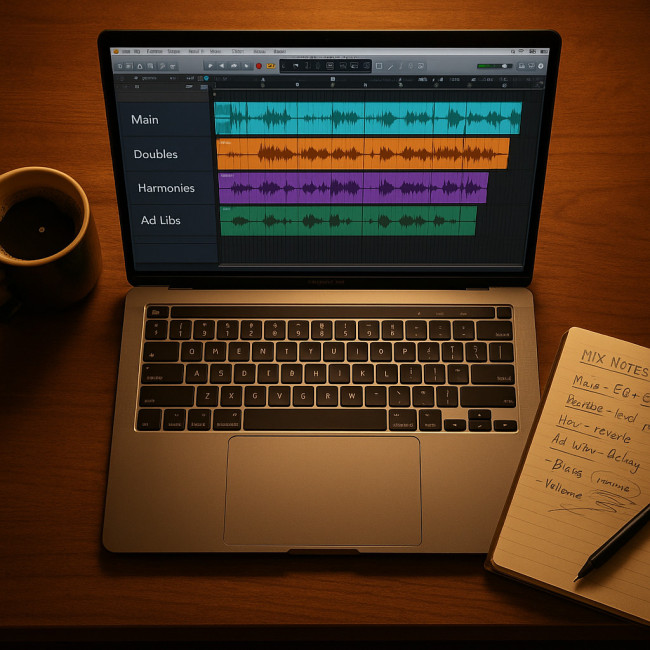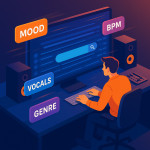Vocal niche or versatility? Strategies to shine in today's soundtrack industry
Film, TV, advertising and video-game producers now scout singers in seconds. Should you market a razor-sharp vocal niche or prove you can morph into any style? This guide weighs both paths, shows you how to position your voice, and reveals the deliverables, pricing clues and metadata that make music supervisors hit “Hire”.
Why your vocal identity matters in the soundtrack market

Choosing how you present yourself sonically is no longer an abstract branding exercise. Music-supervision databases read the tags on your demos the same way viewers skim thumbnails on Netflix: in milliseconds. The tighter the storyline around your voice, the more often algorithms surface your reel when producers type a scene descriptor that fits their scene. That micro-visibility snowballs into real bookings, because supervisors become emotionally invested in artists whose sonic signatures are crystal clear and consistently delivered across every platform, from Instagram reels to full-length trailer cues.
The new rules of sonic storytelling
Streaming platforms release hundreds of new series each month. Each episode needs hooks that mirror characters, eras and emotions in under 30 seconds. That urgent demand forces supervisors to filter singers with extreme precision. If your online presence feels generic, you disappear long before the brief reaches your inbox.
How algorithms shape the shortlist
Directory search filters, AI sound-matching tools and keyword-driven pitching portals push singers whose profiles match scene descriptors such as “1980s synthwave falsetto” or “Celtic lament mezzo”. A clear niche increases algorithmic match rates, whereas broad profiles rely on human curiosity that rarely happens under deadline pressure.
Niche vs versatility: advantages and watch-outs
| Aspect | Specialised niche | Multi-genre versatility |
|---|---|---|
| Search visibility | High on specific keywords | Moderate on many keywords |
| Day-rate potential | Premium if demand is steady | Stable across varied briefs |
| Competition level | Fewer direct rivals | Competes with “session chameleons” |
| Risk during market shifts | Higher (trend may fade) | Lower (can pivot) |
| Brand recall | Memorable signature sound | Memorable adaptability |
Carving a niche that outlives trends
Audit your authentic edge
- List genres you already book most often and note client feedback phrases.
- Analyse streaming stats for your demos: Do certain timbres get longer plays?
- Cross-check with storyline gaps in recent soundtrack briefs.
Package the niche for supervisors
Create a 90-second reel with scene labels (e.g., “Post-apocalyptic trailer chorus”). Host it on your own site and in specialised soundtrack singer listings so recruiters click once and grasp your offer.
Training versatility without brand dilution
Versatility sells when you present it as adaptable mastery rather than “I sing anything”. Follow these steps:
- Cluster genres that share technique (e.g., folk vibrato, medieval chant and fantasy game scores) to show logical range.
- Document tonal shifts in a colour-coded reel: warm baritone ➜ airy head voice ➜ whispered layers.
- Maintain core vocal identity through consistent mic choice and room tone so supervisors still recognise “your” fingerprint.
Deliverables that keep you on a composer's speed-dial

In the eyes of a composer racing against a dub-stage deadline, technical housekeeping speaks louder than melisma. A folder packed with clearly named WAVs converts stress into relief because each region slides straight into the cue without guesswork. When your stems arrive framed like a colour-coded Lego set—main, doubles, harmonies, ad-libs and reference—mix engineers fly through their session and notice the absence of friction. That efficiency becomes part of your artistic reputation, turning a one-off engagement into recurring invitations and long-term visibility on the supervisor's internal speed-dial.
Stem prep basics
Busy mixers expect clean, layered stems (main, doubles, harmonies, ad-libs) with consistent naming. If this workflow is new, read the guide on preparing layered vocal stems.
Metadata that travels with your voice
Embed ISRC, mood, tempo and lyric keywords inside WAV files. Our article on metadata tactics shows the exact fields supervisors search.
Pricing cues
Quote transparent tiers: “Up to 30 seconds sync, three harmony tracks, two revisions – €450.” Refer clients to industry benchmarks in the fair soundtrack vocal rates report to build trust fast.
Pitch smarter, not louder
Targeted outreach
Scan incoming briefs for language that mirrors your niche keywords. A personalised one-liner—“Your brief calls for an ethereal contralto; my reel's first cue matches that tone at 0:12”—outperforms generic PDFs.
Remote session etiquette
Most soundtrack vocals are now captured from home studios. Master low-latency calls, screen sharing of notation and shared cloud folders. For checklists see remote composer-singer workflows.
Quiz: Where does your current strategy sit?
FAQ
- Is it okay to market two distinct niches?
- Yes—group them under clear sub-brands (e.g., “Retro Soul” and “Nordic Folk”) and keep separate playlists so algorithms and humans understand the difference.
- How long should a soundtrack vocal reel be?
- 90 seconds to two minutes. Prioritise the first 15 seconds; data shows supervisors decide within that window.
- Do I need union membership for small indie games?
- Not always. Many indie producers hire non-union singers but may adopt SAG-AFTRA terms voluntarily. Clarify in writing before you record.
- What file format do composers prefer?
- 48 kHz / 24-bit WAV files, dry and uncompressed, accompanied by a reference mix.
Ready to book more soundtrack gigs?
Define your vocal edge today, polish your deliverables, and show supervisors why your voice solves their storytelling puzzle. Need a visibility boost? Publish updated demos on your profile and watch the briefs land in your inbox.
Take action: Choose one niche tag, update your reel labels tonight, and pitch a new series tomorrow morning.











